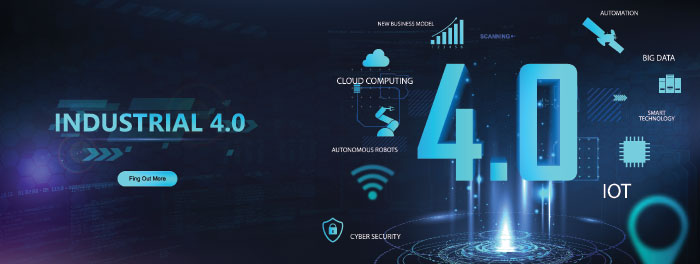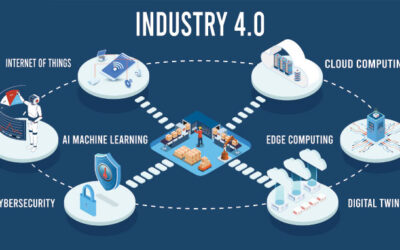A New Era for Engineering Practices
Over the past decade, advances in sensor networks, data analytics, and connectivity have ushered in what many call the Fourth Industrial Revolution, or Industry 4.0. For engineering professionals, these shifts present an opportunity to reexamine traditional processes at every stage of a project’s lifecycle—from initial concept and design to operation and maintenance. While the promise of smarter factories and automated decision‑making captures headlines, the true value lies in integrating new technologies in a way that complements existing expertise, minimizes disruption, and yields measurable gains in quality, speed, and cost control.
The Rise of Connected Devices and Real‑Time Monitoring
Internet‑enabled sensors now track temperature, vibration, pressure, and countless other variables in real time, whether on a factory floor or inside a remote pipeline. By collecting data at high frequency, engineers gain immediate visibility into equipment health, production rates, and energy usage. This continuous feedback loop allows teams to spot anomalies—such as rising bearing temperatures or pressure fluctuations—before a breakdown occurs. In practice, real‑time monitoring can reduce unplanned downtime by up to 50 percent, freeing engineers to focus on optimization rather than emergency repairs.
Utilizing Digital Twins for Deeper Insight
A digital twin is a virtual replica of a physical asset or system, maintained in sync through live data streams. For an engineering team, creating a digital twin of a pump station or assembly line enables “what‑if” analyses without risk to actual operations. Engineers can simulate changes in throughput, test control‑logic adjustments, or evaluate the impact of material substitutions—identifying the most efficient path before committing resources. As a result, project timelines often shorten by 15–20 percent, and capital investments become more predictable because decisions rest on data‑driven simulations.
Applying Predictive Analytics to Prevent Failures
Rather than relying on fixed maintenance schedules, predictive analytics uses historical performance data and machine‑learning algorithms to forecast when a component is likely to fail. By combining data from digital twins, IoT sensors, and maintenance logs, engineers develop models that recognize the subtle patterns preceding a malfunction. For example, a drop in motor current coupled with a slight rise in vibration may signal bearing wear. Maintenance teams can then replace that bearing during a planned outage, avoiding costlier emergency replacements and collateral damage. Organizations report reductions in maintenance expenses of up to 30 percent when shifting to predictive approaches.
Improving Collaboration through Cloud‑Based Platforms
Cloud computing has moved beyond simple file sharing to become a central hub for multidisciplinary collaboration. Engineers, data scientists, and operations managers can access the same up‑to‑date models, simulation results, and performance dashboards from anywhere in the world. Version control tools ensure everyone is working on the latest design iteration, while role‑based access controls safeguard sensitive IP. In large projects—such as infrastructure builds spanning multiple time zones—cloud platforms help keep milestones aligned, accelerate review cycles, and reduce the risk of costly rework due to outdated drawings or miscommunication.
Balancing Connectivity with Cybersecurity
Greater connectivity brings new vulnerabilities: every networked device or software endpoint can become an entry point for malicious actors. For engineering teams, safeguarding intellectual property and ensuring operational continuity are paramount. Best practices include segmenting networks to isolate IoT traffic from corporate systems, enforcing strong authentication for remote access, and applying security patches promptly. Additionally, conducting regular penetration tests and tabletop exercises helps teams identify gaps in incident‑response plans. By embedding security protocols into the design phase—rather than as an afterthought—organizations can maintain the benefits of connected systems while minimizing the risk to critical assets.
Cultivating Skills for a Data‑Driven Future
Adopting Industry 4.0 tools often requires new skill sets: proficiency in data analytics, familiarity with scripting languages, and an understanding of machine‑learning concepts. Engineering leaders can bridge this gap by pairing experienced designers with data‑savvy colleagues in cross‑functional teams. Offering internal workshops on topics like Python for engineering analysis or fundamentals of cloud‑based simulation platforms accelerates adoption. At the same time, encouraging participation in hackathons and collaborative proof‑of‑concept projects helps demystify advanced technologies, allowing engineers to see concrete benefits before scaling across the organization.
Measuring Success and Scaling Up
Early wins build momentum. By defining clear metrics—such as reduction in unplanned downtime, faster cycle times, or lower energy consumption—engineering teams can demonstrate the value of new workflows to stakeholders. Pilots might focus on a single production line or critical asset, with results tracked over a three‑ to six‑month window. Once performance improvements are validated, rolling out standardized processes and templates ensures consistency across sites. This disciplined approach prevents the chaos of disparate “point solutions” and lays the groundwork for continuous improvement.
Evolving Practices for Long‑Term Impact
The evolution toward more connected, data‑driven engineering workflows is no longer optional—it’s essential for remaining competitive in a world of tighter margins and faster innovation cycles. By integrating real-time monitoring, digital twins, predictive analytics, and secure collaboration platforms, engineering professionals can work more efficiently, make better-informed decisions, and deliver higher-quality outcomes. Cultivating the right skills and measuring progress against clear targets ensures that investments in Industry 4.0 deliver sustainable gains. As these practices mature, engineering teams will be equipped to tackle increasingly complex challenges with confidence and precision.




